





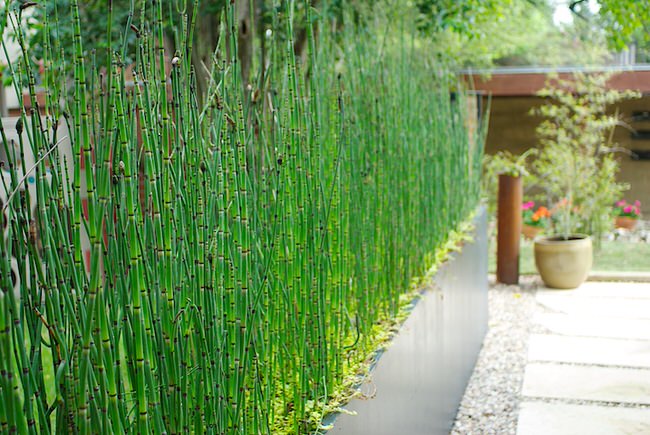
I’m a big fan of good garden design, and architectural plants can go a long way towards curing any design flaws your garden is suffering from. Why? Because one of the major mistakes most gardeners make is lack of focus in the garden. When your beds start to look flat, or too busy, or not connected…chances are you really need some good focal points. It’s just like decorating a room. You need a major piece of art, or a fireplace, or a magnificent window view, or a conversational piece of furniture to really make a design sing. Same goes with garden design. Architectural plants, or structural plants are a great way to add one, or more focal points to your yard or garden. Some quick tips on using architectural plants, and then some of my favorites for you to try!
There are many plants that have strong structural presence in the garden, from palms to cactuses, sedums to tropicals. I’m going to encourage you to look into those types of plants if you live in a zone that can support them, because their exotic nature make them prime focal loin candidates. But I’m going to stick to perennials here because I think they have a broader range over a lot more garden zones, and because that’s where my experience lies. Here are a few of my favorites, and how to grow them!
Yucca – Famous English garden designer Gertrude Jekyll used Yucca as a mainstay in her beautiful cottage style gardens for architecture. Hardy down to zone 4, these evergreen spiky wonders are a great structural plant any time of yea,r but they have a secret… when in flower, they give a spectacular show! Stalks of flowers 6 feet high are common, and last for weeks in June. Leaves can be green, red, or variegated, and all they want out of life is well drained soil and lots of sun. Drought resistant too!
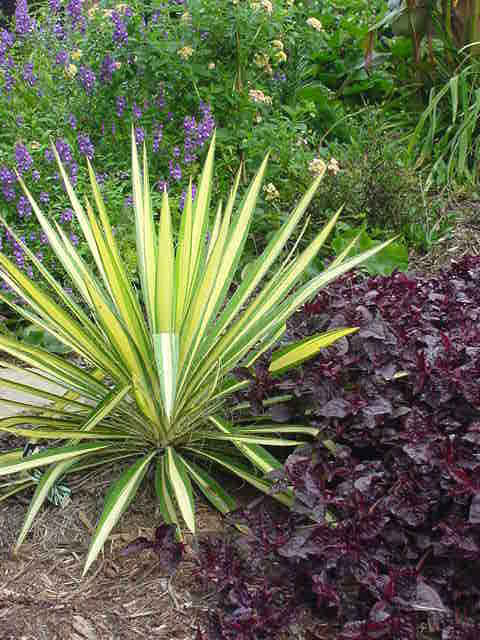
New Zealand Flax – Another beloved strappy leaved plant that is actually related to grasses, New Zealand Flax is grown as a perennial in mild climates, and an annual in colder ones. Red or green leaves can reach up to 10 feet in those mild climates, they are much smaller in areas that frost as they only grow one season. Make a great container plant in colder climates.
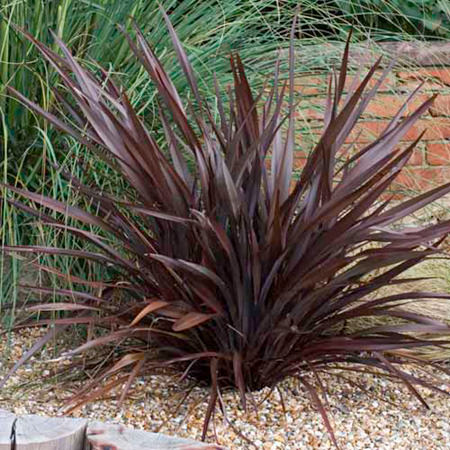
Rodgersia – A large, tropical looking plant that comes back year after year down to zone 5. Three to six feet high and wide, they love shade to part sun, lots of moisture and protection from wind and afternoon sun. This makes a dramatic statement in any bed!
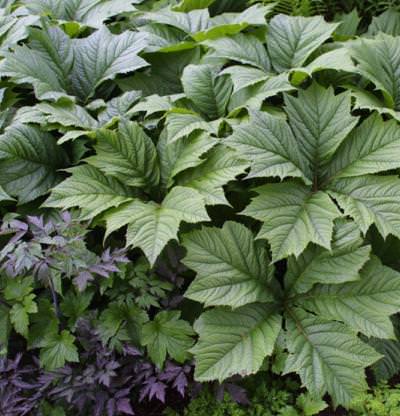
Ornamental Grasses – There are more ornament al grasses than I can cover in this post, but you can learn more at our post on, well… ornamental grasses! They all make a statement in the garden, I have numerous varieties and at least one in every bed. Calamagrostis “Karl Foerster” is my fav upright variety, though there are several new ones that deserve attention. Any Miscanthus also makes a statement, especially the variegated ones. There is an ornamental grass for almost every zone and situation.
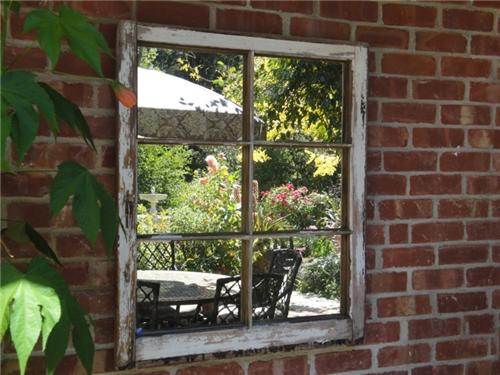
Giant Elephant Ear – A tuber that grows large, tropical looking leaves and stand up to eight feet tall, this is a wonderful addition to any shade or part shade garden. Only hardy down to zone 7, you can lift the tubers for winter if it isn’t hardy in your area. Loves water, fertilizer and shade in the afternoon in hot areas.
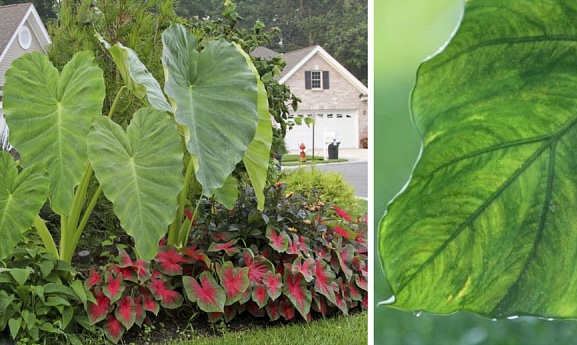
Sea Holly/Eryngium – Sea Holly is a striking plant just made for that hot, sun baked spot. Needing full sun, very drought tolerant, and thriving on neglect, these plants are perfect for xeriscaping. Blue, unusual blooms in midsummer. These plants can grow 6-8 feet tall in some varieties, but they tend to not grow very wide, so plant several 2-3 feet apart for a good show. Hardy down to zone 2, they do not transplant well so make sure you put them where you want them!
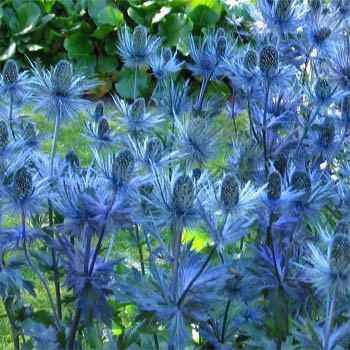
Globe Thistle/Echinops – Another spiky looking blue plant, grown almost exactly like sea holly… Lovely blue balls of flowers mid to late summer. Dry well! One of the shorter plants on my list at only 3 feet, they are hardy to zone 3. Mass these for the best effect…and it is some effect to see a bed of this electric blue color and amazing texture! Goes well with yarrow…
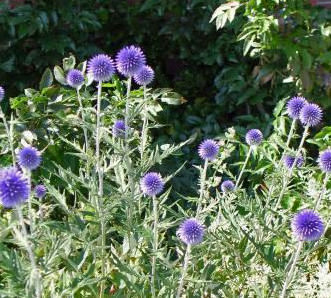
Joe Pye Weed – A native to the prairie state, this large perennial grows 6-8 feet high and wide. Blooming in late summer with broad, plate like flowers that resemble sedums, in a dusty purple. A dwarf form is available. Make sure you buy a named variety, like “Gateway” in order to get large flowers and a stronger plant. Prefers sun, moist soil, and looks best if cut down to the ground in early spring.
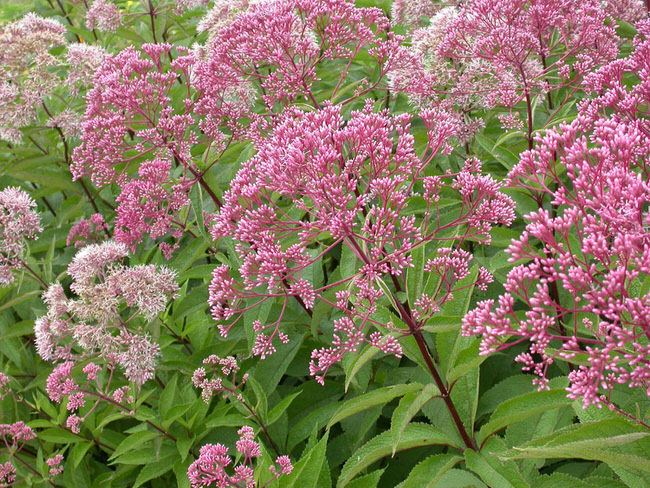
Finally, we have horsetail. Horsetail reed is a grass that dates back to a prehistoric age. A water loving plant that can actually grow in swampy soil, this plant loves sun but will tolerate some shade. Evergreen in mild climates. Great used in a modern or contemporary garden for it’s structure and texture. Fast growing to 3-4 feet, it spreads underground and will spread indefinitely if not contained. Because of this, a great container plant.
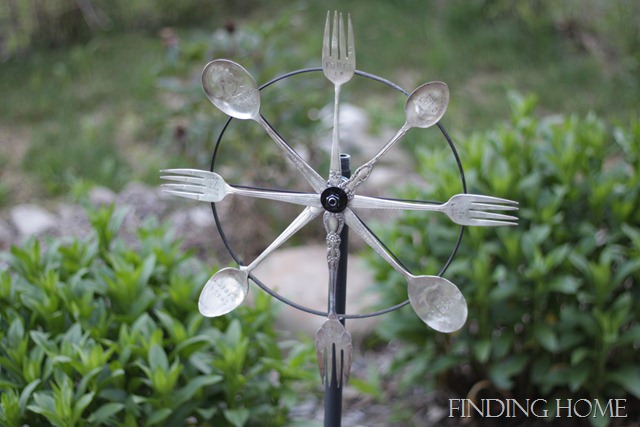
Copyright © www.100flowers.win Botanic Garden All Rights Reserved